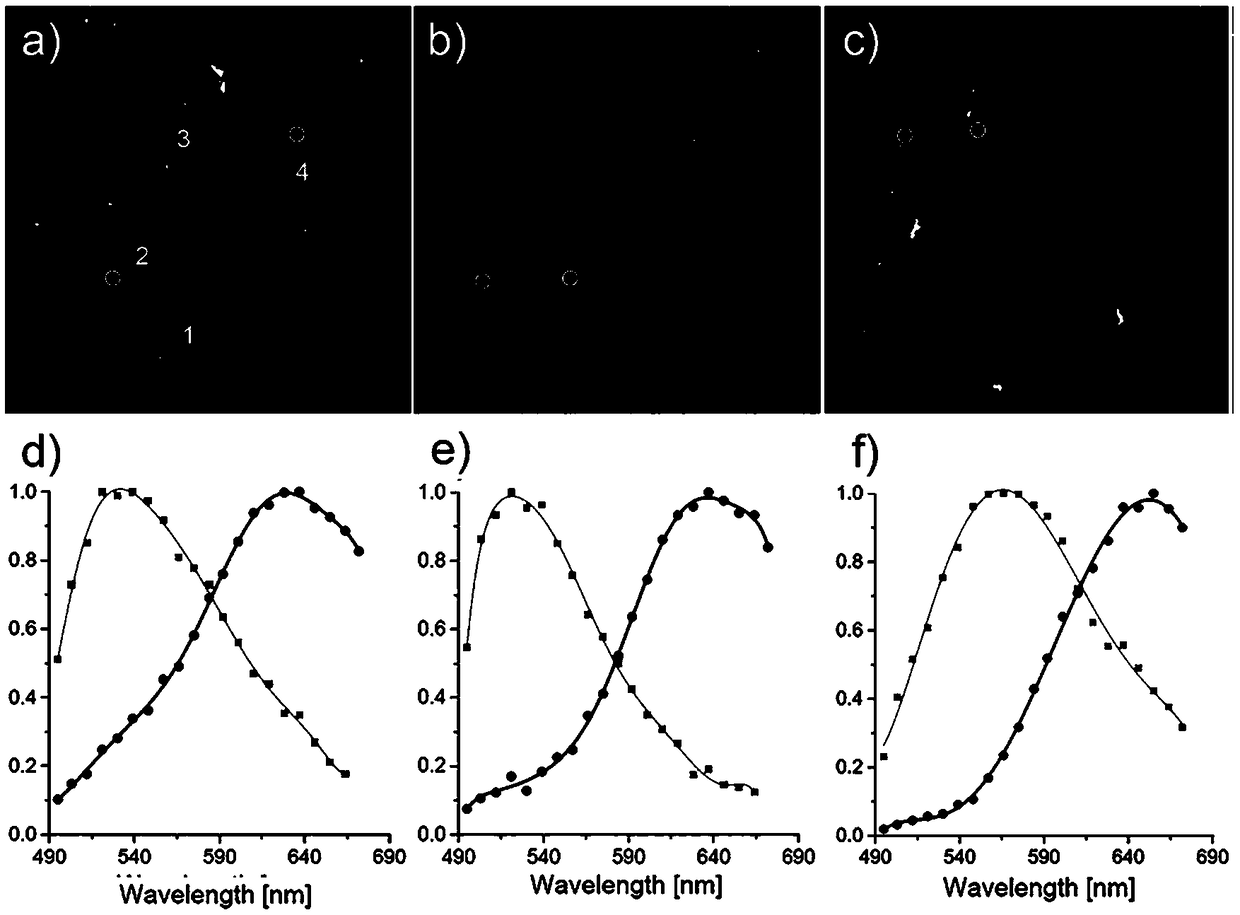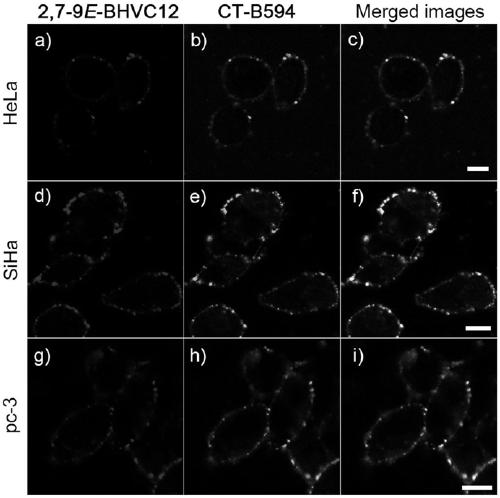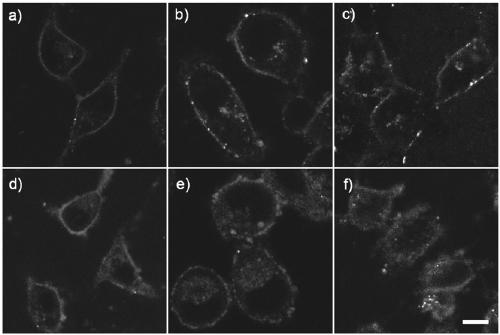A probe capable of clearly distinguishing and simultaneously imaging cell membrane lipid raft and non-lipid raft microdomains with two fluorescent colors and its application
A technology of fluorescent probes and cell membranes, applied in the field of fluorescent probes, can solve problems such as difficulty in distinguishing two types of micro-regions and limited applications, and achieve broad commercialization prospects, convenient operation, and good biocompatibility
- Summary
- Abstract
- Description
- Claims
- Application Information
AI Technical Summary
Problems solved by technology
Method used
Image
Examples
Embodiment 1
[0025] Synthesis of 4,4-dibromo-2-nitrobiphenyl (1)
[0026] 10 g of p-dibromobiphenyl was dissolved in 120 mL of glacial acetic acid, then the solution was stirred and heated to 100 °C. Add 40mL of fuming nitric acid, and react the system for 30 minutes. After the reaction was completed, the solution was cooled to room temperature, and the crude product was obtained by filtration. The pure product can be obtained by recrystallization from ethanol with a yield of 91%.
[0027] 1 H NMR (300MHz, CDCl 3 ), δ (ppm): 8.03 (d, J = 1.8Hz, 1H), 7.76 (dd, J 1 =8.1Hz,J 2 =1.8Hz, 1H), 7.54–7.59(m, 2H), 7.31(s, 1H), 7.14–7.18(m, 2H).
[0028] Synthesis of 2,7-Dibromocarbazole (2)
[0029] 7.8 g of compound 1 was dissolved in 30 mL of triethyl phosphite and stirred evenly. Under the protection of nitrogen, the above system was heated to 150° C. and reacted for 24 hours. After the excess solvent was distilled off under reduced pressure, the residue was separated and purified by col...
Embodiment 2
[0041] Culture of SiHa, HeLa and pc-3 cells
[0042] All cell lines were stored at 37°C, 5% CO 2 cultured in a saturated humidity incubator. SiHa and HeLa cell lines were cultured adherently in H-DMEM medium containing 10% fetal bovine serum (containing 1% double antibody). The pc-3 cell line was adhered and cultured in 1640 medium containing 10% fetal bovine serum. After the cells grow to the logarithmic phase, culture the slices: ① Soak the coverslips in absolute ethanol for 30 minutes, dry them with an alcohol lamp, and place them in a disposable 35mm culture dish; ② Wash the cells in the 100mL cell bottle with PBS. Three times, digest with 1mL 0.25% trypsin for 3-5min, pour out the medium carefully, add a small amount of fresh medium and pipette evenly, after counting the cells, leave cells with a suitable density, add the medium to the required volume ( The final concentration of control cells was 1×10 4 ), inoculated into a petri dish containing a coverslip, and plac...
Embodiment 3
[0044] 2,7-9E-BHVC12 staining of SiHa, HeLa and pc-3 cells and real color imaging
[0045] Firstly, the probe 2,7-9E-BHVC12 was prepared into a DMSO mother solution with a concentration of 5 mM. During the staining experiment, 4 μL of the above mother solution was taken out and added to 1 mL of PBS buffer solution, and the staining solution was made by shaking evenly. The inoculated cell slides were washed three times with PBS, then placed in staining solution for staining, and placed in CO 2 Stain in the incubator for 20min. The staining solution was sucked out, and the stained cell slides were washed with PBS three times, and the cell growth side was covered on the glass slide, and imaged and observed under a laser scanning confocal fluorescence microscope. The full-color fluorescence images were acquired with the Lambda spectral imaging module of a Zeiss confocal microscope LSM780. The module uses a 488nm laser as a light source to excite, and collects fluorescence in the...
PUM
 Login to View More
Login to View More Abstract
Description
Claims
Application Information
 Login to View More
Login to View More - R&D
- Intellectual Property
- Life Sciences
- Materials
- Tech Scout
- Unparalleled Data Quality
- Higher Quality Content
- 60% Fewer Hallucinations
Browse by: Latest US Patents, China's latest patents, Technical Efficacy Thesaurus, Application Domain, Technology Topic, Popular Technical Reports.
© 2025 PatSnap. All rights reserved.Legal|Privacy policy|Modern Slavery Act Transparency Statement|Sitemap|About US| Contact US: help@patsnap.com



